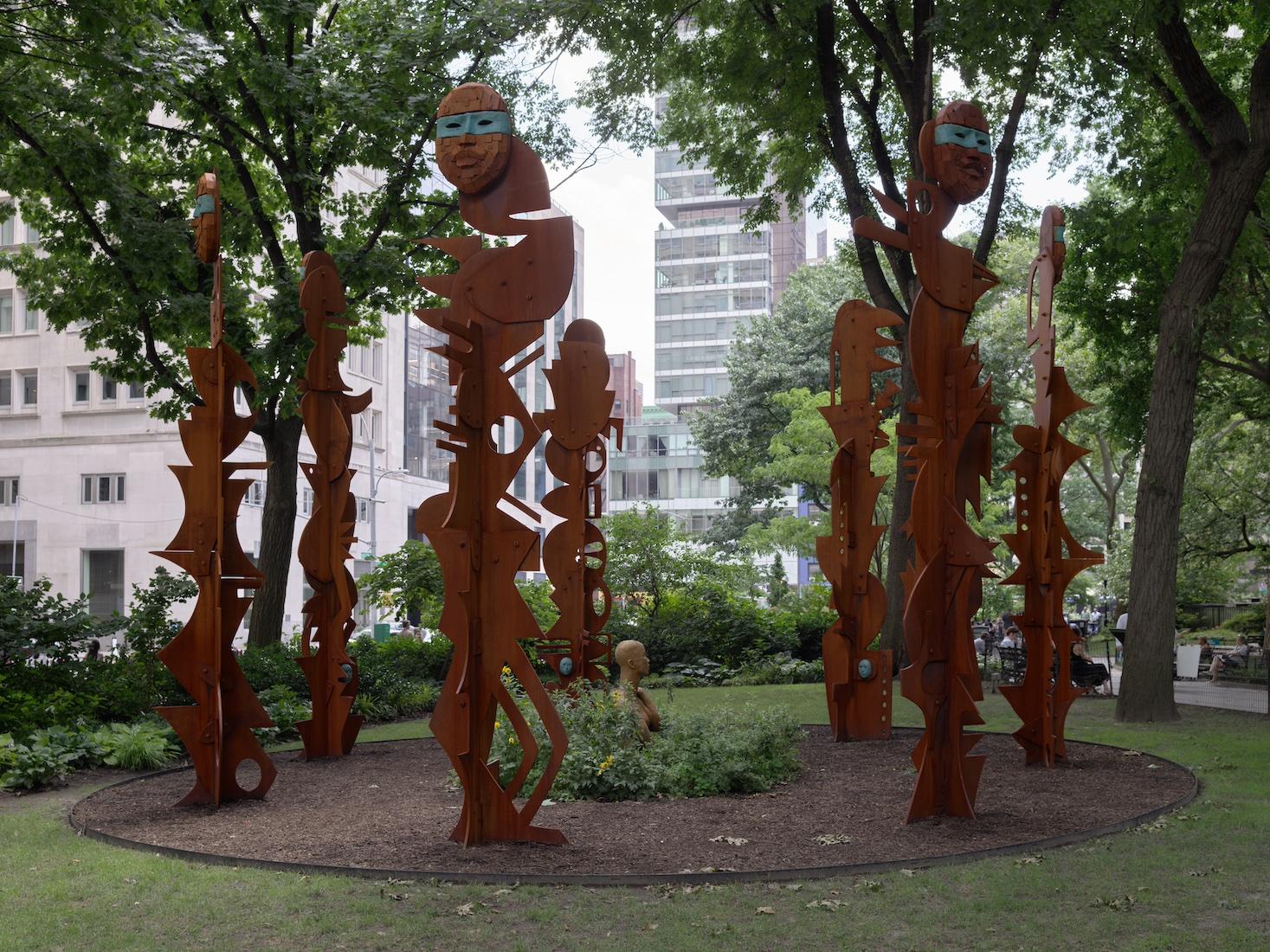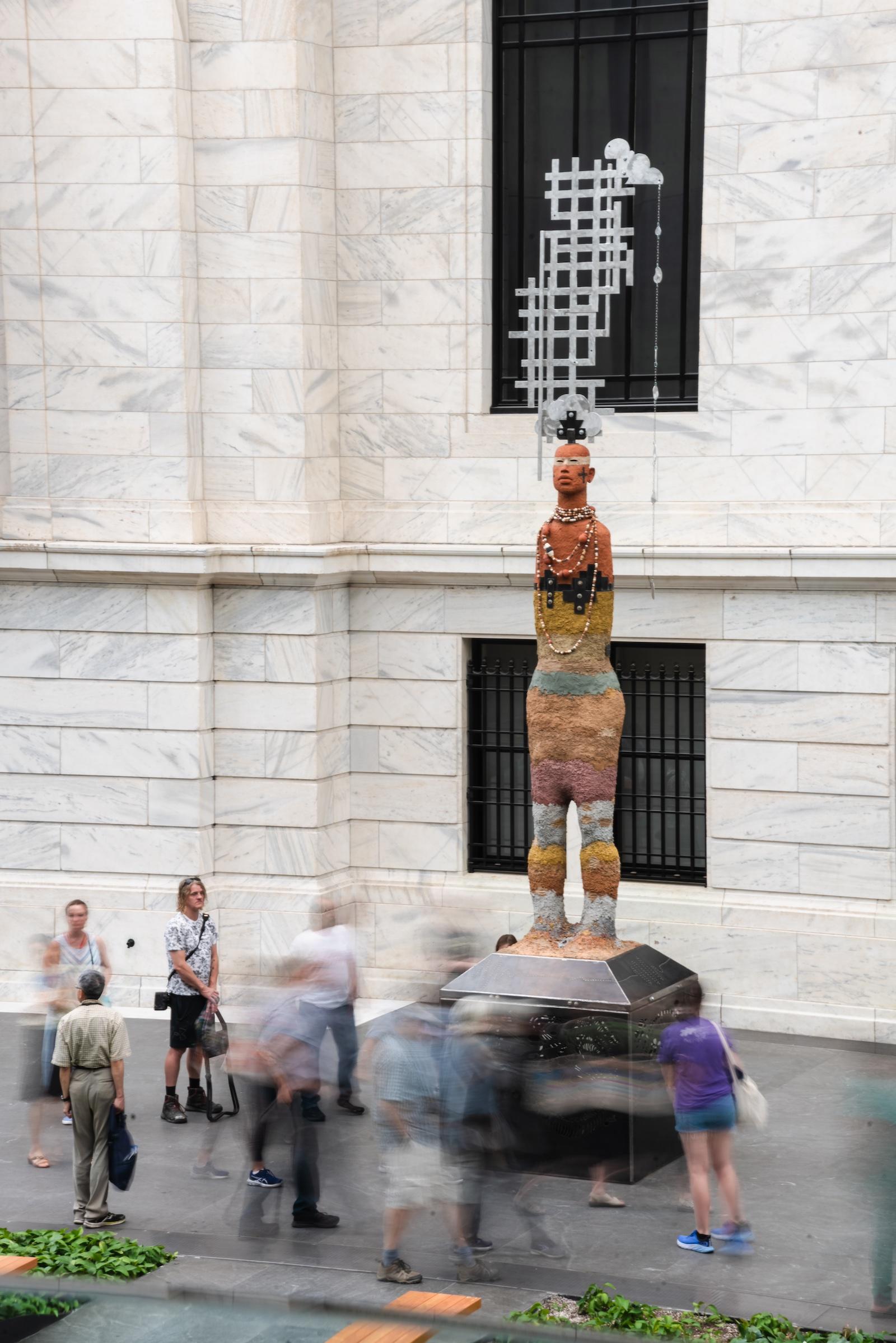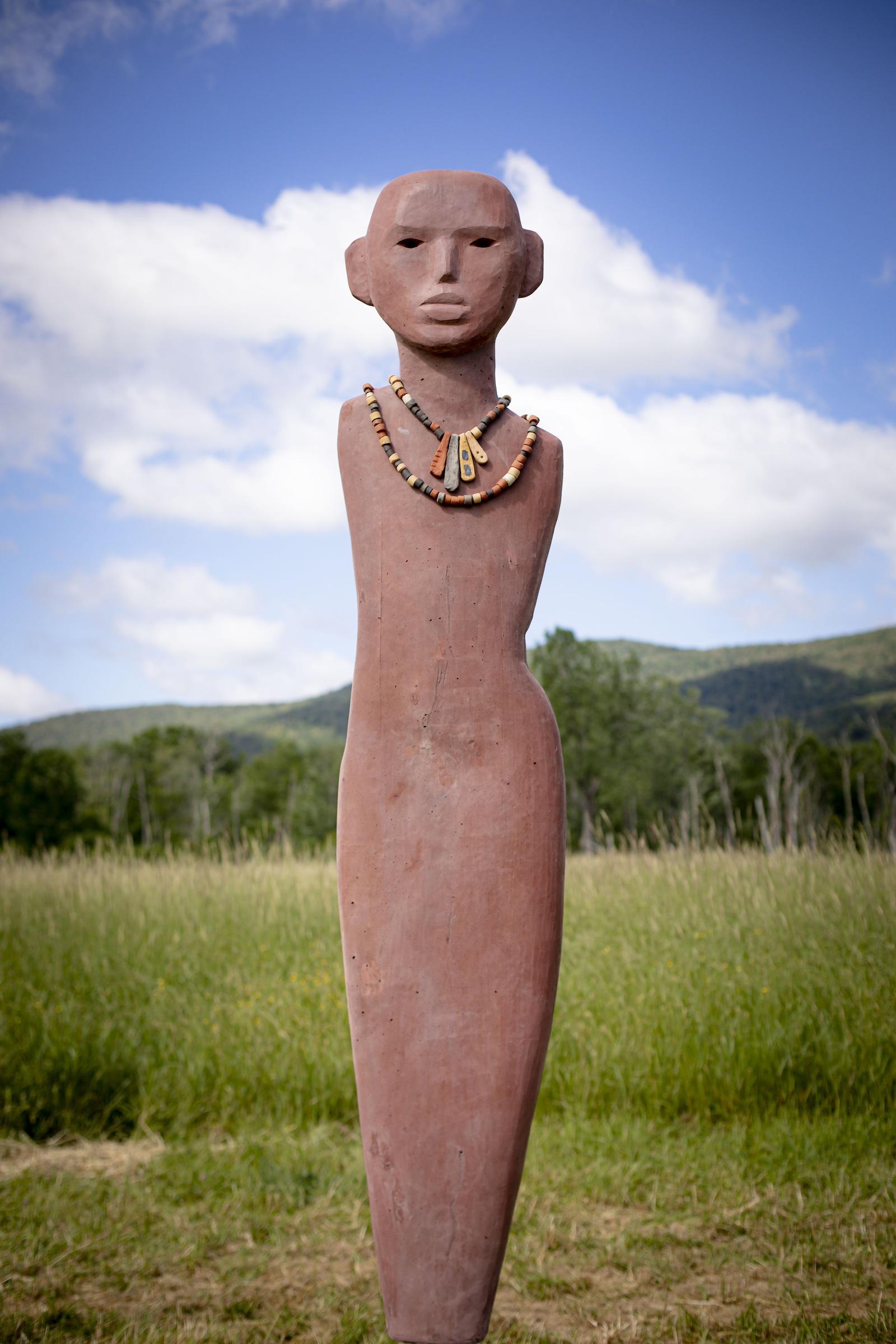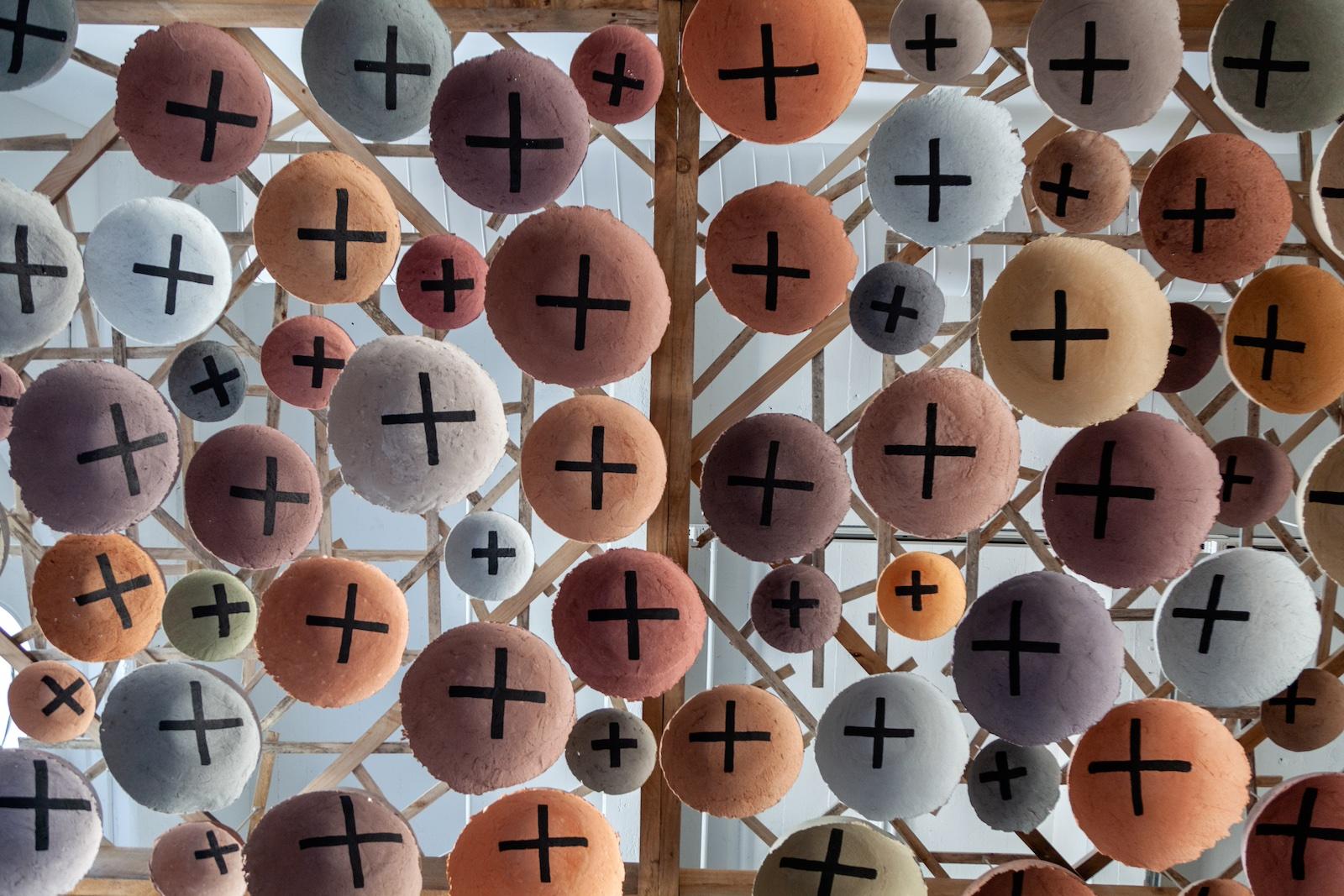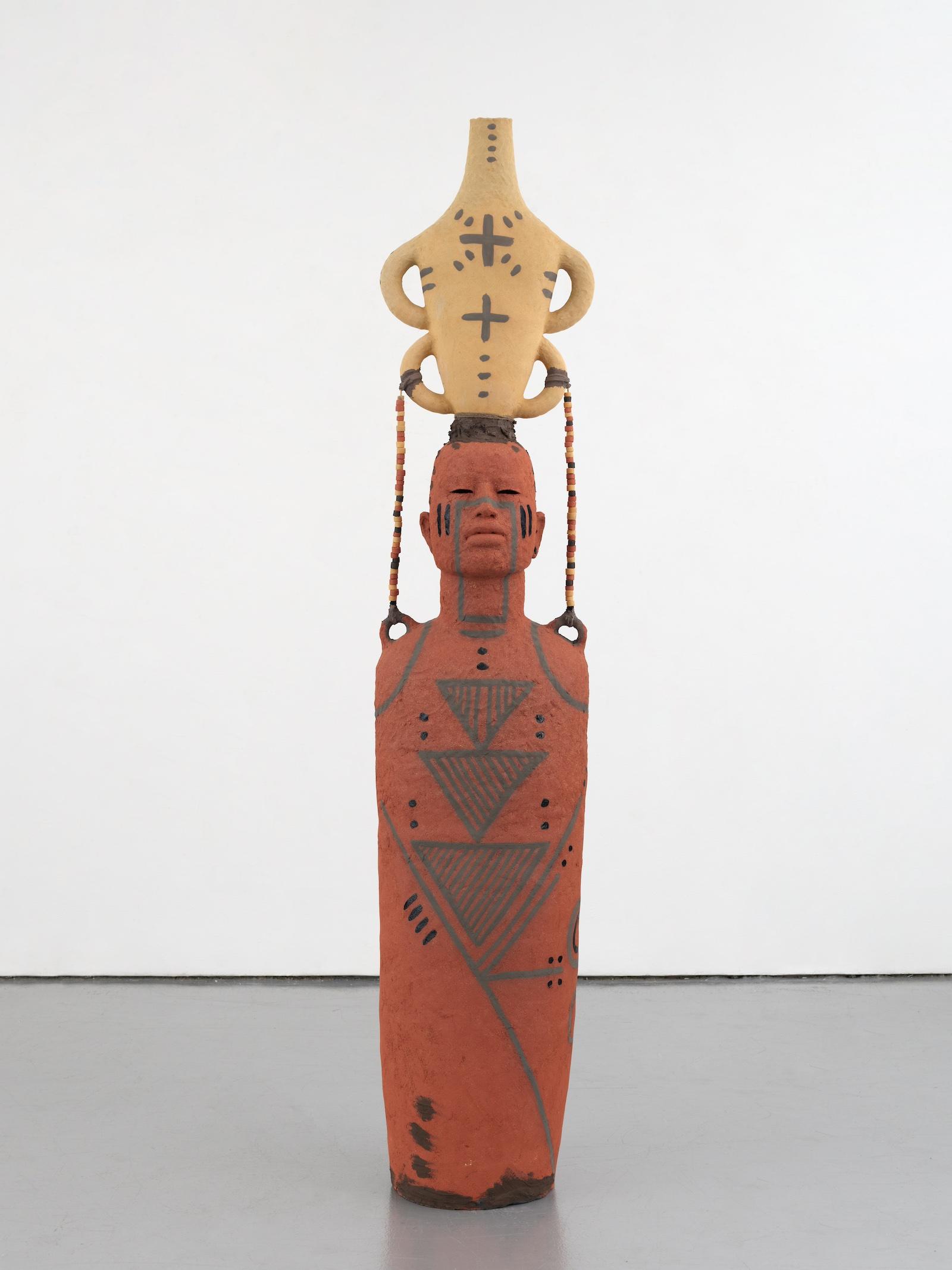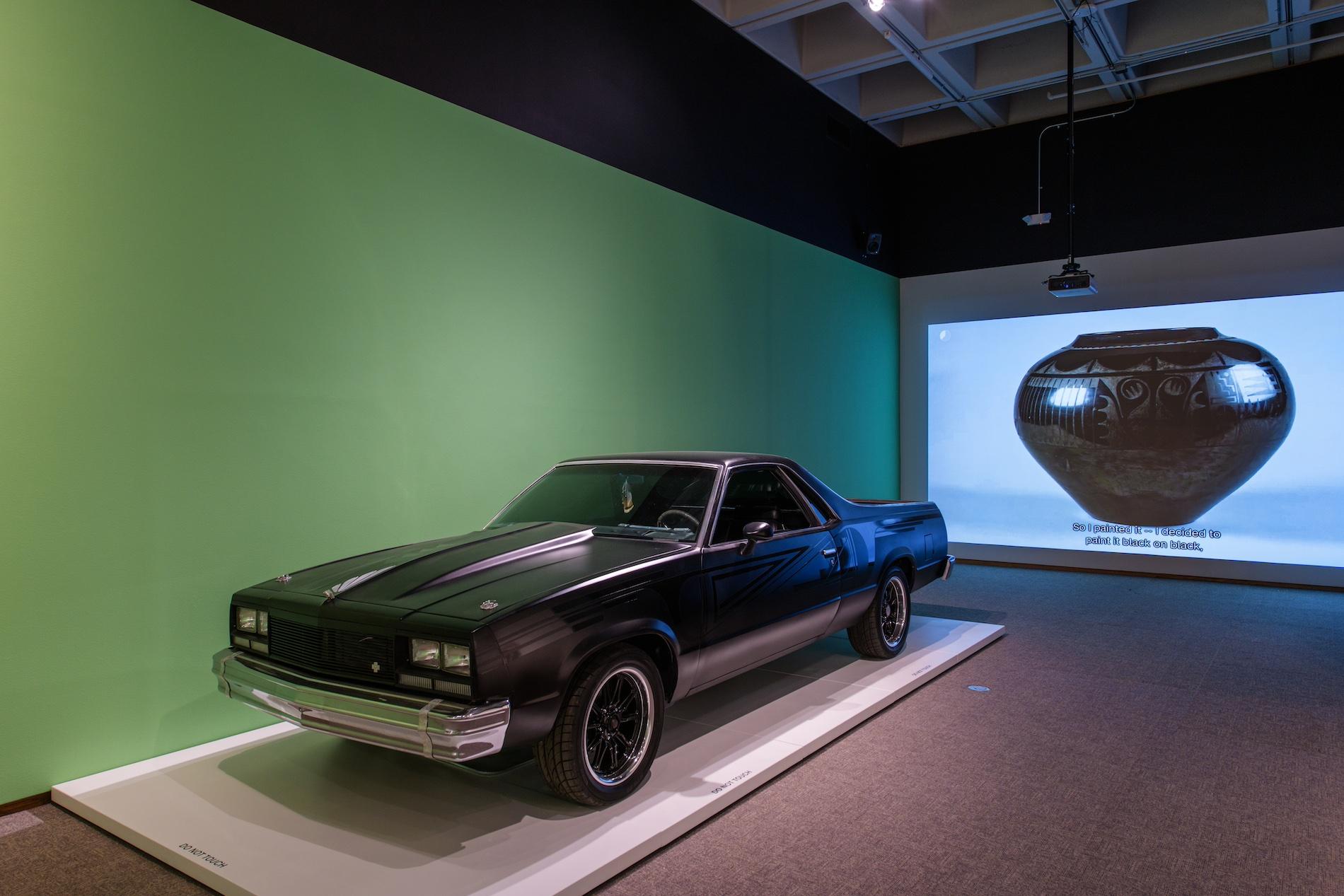Simpson’s work was also included in the recent exhibition To Take Shape and Meaning: Form and Design in Contemporary American Indian Art at the North Carolina Museum of Art, Raleigh by guest curator Nancy Strickland Fields (Lumbee).
“She is an artistic force, and I am inspired by all she creates and who she is,” says Fields, the Director/Curator of The Museum of the Southeast American Indian at The University of North Carolina at Pembroke.
The NMCA has now acquired two of 12 sentinel-like figures from Simpson’s installation Counterculture, as well as a smaller sculpture, Nightwork: Shame. Linda Dougherty, Chief Curator and Senior Curator of Contemporary Art, says, “Her works are significant additions to the museum’s permanent collection and part of our efforts to expand works by Native American artists.” In Counterculture, negative-space eyes reveal the sky– intended to make it easier to “give consciousness to the inanimate.”
Aware of her carbon footprint, the artist uses very thin layers of clay in an unforgiving, “slap slab” hand-building technique. Simpson retains fingerprints in her work like those still visible in the ancient pottery shards and handprints within the ancestral dwellings of her Santa Clara Pueblo homelands in New Mexico where she still lives.




